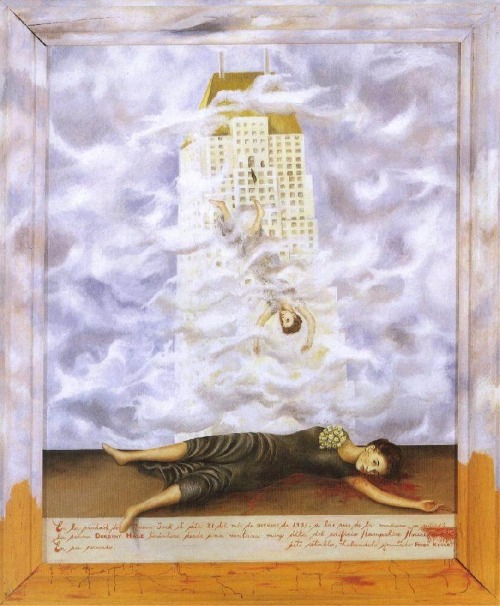
Suicide of Dorothy Hale, Frida Kahlo
Of course, the history of this painting is not unknown. It describes the suicide of Dorothy Hale, a willful aspiring New York actress who threw herself in 1938 from the window of her Central Park-facing apartment on the 16th floor of Hampshire House. The work was commissioned from Frida Kahlo by a friend of the deceased who was horrified by the crudeness of the oil presented as an ‘altarpiece’, a Latin American usage that describes a sacred or miraculous scene as graphically as possible, even with deliberate rhetorical verbal description.
Certainly, defenestration, as suicide, is a tragic substance. And it would be frivolous to risk trivial allusive metaphors.
The defenestration, as a pictorial object, has in this case the interesting story behind the painting mentioned and that can be reviewed here.
Dorothy Hale painting by Frida Kahlo
Defenestration, as hard data, does not necessarily predict greater suicidal lethality, taking into account, obviously, the height of the jump -a floor three is not the same as a floor thirteen-. This is how the BMJ link informs us (Runeson B et al. Method of attempted suicide as predictor of subsequent successful suicide: national long term cohort study) that Nietos de Kraepelin reaches us, -now no longer in the Canary Islands but again from Canada, and that for the tour it was quite strange -.
The defenestration, as resounding news, can evoke the shocking image of ‘The Falling Man’; Although his tragic motive was perhaps not precisely suicide, equally inevitable was exitus letalis.
Frida Kahlo, suicide painting
The one in charge of qualifying the somber note is, like other times, the Dictionary of the Royal Academy, who reminds us that defenestrate also means to dismiss or expel someone from a position (not through a window, of course, but with the same brio perhaps). to a bureaucrat screwed to the position, in an image worthy also of picturesque altarpieces).



